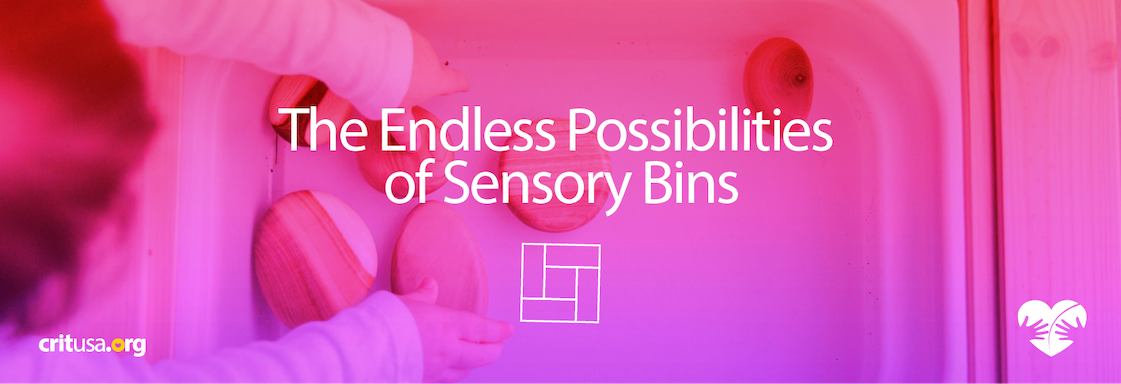A sensory bin is a shallow container filled with a base material and various small objects to encourage and enhance play. Some sensory bins utilize a dry material for the base, such as sand, dried beans, or rice. Others are designed for messier play and may use water, shaving cream, or whipped cream as the base.
Sensory bins can be an excellent tool for targeting a variety of skills, including:
- Sensory exploration: Of course, sensory bins provide an opportunity for your child to explore touch, but they can also be an excellent way to explore sight, sound, smell, and even taste with certain mediums.
- Visual perceptual skills: Seeking items hidden inside a sensory bin is a simple way to work on a variety of visual skills, including figure-ground perception and visual discrimination, all in one activity.
- Social skills: Playing in a sensory bin with a therapist, parent, or peer offers natural opportunities to increase joint attention, practice cooperative play and turn-taking, and share items.
- Fine motor skills: By including tongs, spoons, and other simple tools in your sensory bin, you can increase opportunities for digging, scooping, pouring, and stirring – all of which help strengthen hands and build fine motor skills!
- Regulation and calming: Sensory play can be calming for many children, especially when coupled with a lower-stimulation environment (low lights, soft music, etc.).
- Language development: Sensory bins provide a naturally rich environment that encourages engagement and connection for increased imitation and building of communicative intent.
Making a sensory bin at home is a great way to engage with your child while working on skills they’re practicing during therapy. Here are a few things to keep in mind when creating a sensory bin:
- Avoid choking hazards, especially if your child frequently mouths items during play.
- Ensure that all materials are non-toxic.
- Supervise your child while playing with a sensory bin to ensure safety.
- Do not force your child to engage with the materials if they are scared or hesitant. Often, if you begin to play, they will slowly join you on their own! If you still need to, you may introduce a texture they are not ready for.
- Swapping out items helps keep children interested and builds connections to seasonal celebrations and holidays.
- Sensory bins do not need to be expensive to be beneficial. Simple, natural materials such as dried pinto beans, rice, or plain water make excellent bases for a sensory bin.
- Be creative and have fun!
If you want to create a sensory bin at home and don’t know where to start, talk to your child’s therapist about recommendations and suggestions to support your child’s goals.

